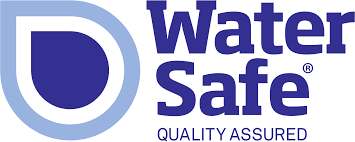Alpha Boiler E10 Fault Code
The Alpha Boiler E10 fault code is when your central heating boiler has low or no boiler pressure. E10 fault codes result when your boiler pressure drops, disrupting the efficiency of your heating system.
Symptoms of the E10 fault code include your radiators not getting hot – resulting in no central heating – or no hot water. Navigating this Alpha boiler fault code requires understanding the underlying low boiler pressure issue.
Fixing the E10 fault requires repressurising the boiler. If the E10 fault frequently reappears, you have a leak in your central heating system.
In this article, we’ll troubleshoot Alpha boiler E10 fault codes.

Symptoms Of The E10 Error Code On A Boiler
Symptoms of the E10 error code include:
- Little-to-no hot water from taps and showers.
- Cold radiators – radiators remain cold or are only partially warm.
- Boiler not working – the boiler fails to start or ignite (even when there’s a hot water demand).
- Error code E10 – shown clearly on the Alpha boiler display panel.
- Low-pressure warning light or message flashing on the boiler control panel.
- Pressure gauge below 1 bar – the ideal pressure range for boilers is between 1 and 1.5 bar.
Now that Alpha boilers’ error code symptoms have been identified, let’s see what causes the E10 fault code next.
Causes of Alpha E10 fault codes
- Low boiler pressure
- Filling loop issues
- System leaks
- Faulty pressure valve
- Restricted central heating
flow or flow sensor fault - Temperature sensor fault
Let’s move on to how to fix E10 error codes.
How To Fix The E10 Fault
You can clear the E10 fault on your boiler by repressurising the central heating system using this step-by-step guide:
- Identify the pressure: Check the water pressure gauge on your boiler. The pressure gauge is a small dial on the front panel of the boiler. Modern boilers have digital pressure gauges. The ideal boiler pressure range is between 1 and 1.5 bars.
If the pressure has dropped below 1 bar, it means your system has low pressure, triggering the E10 error code. - Top up boiler pressure: When pressure readings are low, you need to repressurise your Alpha boiler. Repressurising is done via the filling loop. Turn the boiler off and allow it to cool down before proceeding, waiting 1 to 2 hours.
Locate the filling loop by referring to your boiler manual. Some boiler models may have built-in or external loops. The filling loop can be found under the boiler or near a sink and has two valves on either end. One part is connected to the boiler and the other is connected to the mains water supply.
Carefully open the valves to allow water into the system. You will hear a gushing sound when the water begins to flow. Slowly add water via the filling loop to increase pressure to 1 – 1.5 bars. Once the ideal pressure has been reached, close the filling loop valves. - Reset the boiler: Once you have repressurised the boiler, turn the boiler back on. The on/off button can be found on the front or side panel of most Alpha boiler models.
This reset will fire up the boiler and clear E10 faults. Wait 2 to 3 minutes for your boiler to heat up.
The E10 fault code will disappear and the boiler will function normally. However, if you suspect a water leak but can’t locate it, or if pressure quickly drops again, there is a hidden leak within your home heating system. - Check for system leaks: Inspect all radiators, pipework, and valves for moisture or dripping water. Signs of system leaks can manifest as unexplained pools of water around heating system fittings, condensation on heating valves, damp patches, and mould growth.
Repair or replace leaky components, such as a faulty pressure valve, if necessary.
Other tips:
- Your pressure valve might be faulty if topping up and resetting the boiler doesn’t work. Contact a Gas Safe engineer to repair the problem. A boiler technician will check internal wiring connections, primary flow sensor fault, cylinder sensor, flame sensing electrode, and temperature sensor wiring – amongst others.
- Always prioritise safety when dealing with gas boilers. If you’re unsure about any step, contact a qualified Gas Safe engineer.
Next, we’ll decipher what you can do if the E10 fault code persists.
What Should I Do If The E10 Error Keeps Displaying
If the E10 fault code returns after repressurising the boiler you should contact a leak detection expert. Professional boiler technicians, like ADI Leak Detection, use leak detection equipment, such as tracer gas, to find hidden water leaks within central heating systems.
Follow these steps:
Re-check for leaks
- Inspect all radiators, pipework, valves, and the boiler for signs of moisture, such as dampness or dripping water.
- Check for leaks in the joints and seals of your thermal system.
- Meticulous inspection eliminates any lingering leakage caused by persistent E10 codes.
Confirm pressure stability
- Recheck system pressure after topping up the boiler.
- Refer to the boiler manual for the filling loop location and further instructions, if needed.
- Boiler pressures that remain constant (between 1 and 1.5 bar) will eliminate E10 codes.
- If the pressure drops quickly, it’s a strong indicator of a leak in the system and professional leak detectors are needed.
FAQs
E10 errors are caused by factors such as low boiler pressure, system leaks, or faulty pressure valves within the central heating system.
The reset button is on the front left-hand side of the display panel on Alpha E-Tec combi models. The button is marked “reset”. To locate the reset button for other Alpha boiler models, refer to the manufacturer’s guide.








